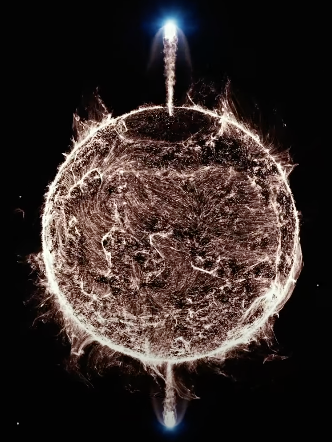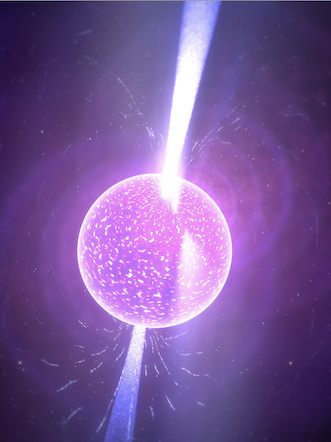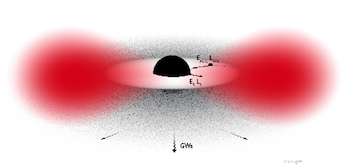
Gamma-ray bursts
High-energy and Very-High-Energy gamma rays from GRBs. Detection, multiwavelength/multimessenger coordination, phenomenology, population studies.
Gamma-ray bursts (GRBs) are some of the most explosive events since the Big Bang. They come from the core collapses of the most massive stars, and the mergers of compact objects. We observe them as flashes of gamma rays, often followed by smoothly evolving emission across the electromagnetic spectrum. During their brief existence, they outshine the entire rest of their host galaxy.
Since they are transient events, successful GRB detection requires quick coordination and responses. This is especially important in the case of multiwavelength and multimessenger responses; GRBs emit across a wide range of photon wavelengths and are candidate sources for all four messengers, having been detected in electromagnetic radiation and gravitational waves. The combination of multiwavelength data in particular is crucial for helping us understand the processes that produce GRBs.

Galactic neutron stars
Searches for continuous gravitational waves from neutron stars. Methods, background rejection, detector characterization.
The gravitational waves that have been detected so far have been from transient sources; namely, the mergers of compact objects such as neutron stars and black holes. However, persistent sources of gravitational waves must also exist, and neutron stars with non-axisymmetric matter distributions are some of the best candidates for continuous gravitational waves. These could be neutron stars mass asymmetries such as ‘mountains’ on their crusts, or mass currents flowing beneath their surfaces.
The most sensitive searches for continuous gravitational waves have not found any signals so far, but have set limits on the largest bumps on Galactic neutron stars to be less than centimeters or even millimeters tall. These searches can turn up over 1017 search results for a single target. These are truly big data problems; they require careful handling of the statistics and clever methods of background rejection. As both the detectors and the methods improve in sensitivity, the detection of the first persistent gravitational-wave source could happen any day now.

Axions and axion-like particles
Astrophysical signatures of axion clouds around black holes. The Galactic stellar-mass black hole population.
The axion is a hypothetical particle that naturally solves a problem in quantum chromodynamics while simultaneously being a prime dark matter candidate. If such particles exist, their vacuum fluctuations can become ‘trapped’ around the gravitational potential wells of black holes, building up ever larger clouds of axions (or, more generally, any bosons) in a runaway process known as the superradiance instability. The cloud grows by extracting the black hole spin, and as the growth saturates, the axions annihilate within the cloud and produce coherent, long-lived, continuous gravitational-wave emission.
The current generation of gravitational-wave detectors could detect signals from axions within a certain mass range. However, their detectability depends sensitively on the population of stellar-mass black holes in the Galaxy: their masses, their spins, their ages and distances. The study of axion annihilation signatures depends on our understanding of the Galactic black hole population, and in particular on the isolated black hole population, which is notoriously difficult to otherwise detect.